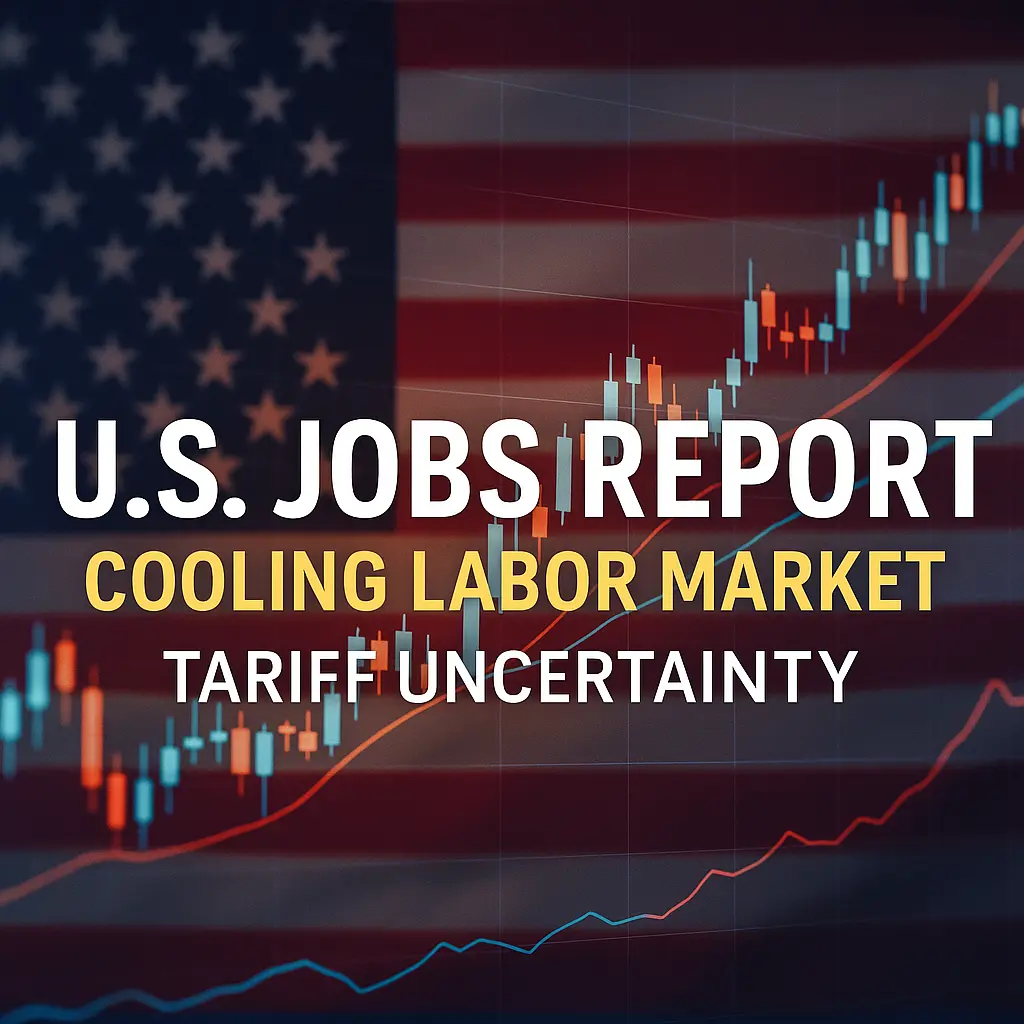The U.S. Jobs Report July 2025 has confirmed what many economists suspected—a cooling labor market that, while still creating jobs, is slowing in pace amid tariff headwinds and cautious business sentiment. The economy added only 73,000 jobs in July, well below the forecasted 100,000. The unemployment rate inched up to 4.2%, remaining within the narrow band it has hovered around since May 2024.
Adding to the cautious tone, the Bureau of Labor Statistics revised May and June’s job growth figures downward, sparking debate over the reliability of post-pandemic employment data. These revisions, coupled with ongoing tariff developments, are shaping expectations for the Federal Reserve’s next move on interest rates—and for now, the odds of a September rate cut sit at less than 50%.
Slower Job Growth Signals a Shift in Hiring Momentum
Falling Short of Expectations
The July figures mark one of the sharpest misses in recent months. Economists had predicted the creation of 100,000 jobs, but actual gains fell short by 27,000. This gap points to more conservative hiring strategies by employers, many of whom are contending with higher input costs due to tariffs, alongside a softer demand outlook.
Cooling vs. Collapsing
While the slowdown is clear, experts stress this is not a labor market collapse. Instead, it reflects a moderation from post-pandemic highs toward a more sustainable pace. Cooling can help ease wage inflation and give businesses room to focus on productivity—but it also carries risks if momentum slows too much.
The Problem of Data Revisions
May and June Adjustments
The downward revisions for the prior two months have reignited concerns over post-COVID employment data volatility. Analysts note that early employment estimates are now more likely to be significantly revised as more complete data becomes available, making it harder for policymakers and businesses to plan effectively.
Trust and Policy Implications
When job numbers are repeatedly revised downward, it undermines market confidence and can influence Federal Reserve policy. For investors, these changes can trigger shifts in portfolio strategy; for the Fed, they complicate decisions on whether to tighten or loosen monetary policy.
Unemployment Rate Stability Masks Deeper Trends
4.2% but Not the Whole Story
At first glance, the unemployment rate’s modest increase to 4.2% suggests stability. However, headline figures can obscure important nuances—such as reduced labor force participation, increases in part-time work, and persistent underemployment.
These underlying dynamics may indicate that the labor market is less robust than the unemployment rate alone suggests.
Tariffs Add an Economic Wildcard
New Tariff Measures in Effect
The July report came just as new tariffs were implemented, targeting a range of imports from multiple trading partners. While designed to boost domestic production, these measures can also increase production costs and dampen hiring in sectors exposed to global supply chains.
Ripple Effects on Hiring
Tariffs can cause businesses to delay expansion plans, limit payroll growth, or even reduce staff if costs outpace revenue. The manufacturing, retail, and logistics industries are particularly sensitive to such trade policy changes.
Federal Reserve Hesitation on Rate Cuts
Less Than 50% Probability in September
With tariffs potentially fueling inflationary pressures and job growth slowing, the Fed is adopting a wait-and-see approach. Current market odds place the likelihood of a September rate cut at under 50%, reflecting the Fed’s commitment to controlling inflation before considering economic stimulus.
This cautious stance is consistent with a “cooling but stable” labor market, where economic risks are balanced by underlying resilience.
Looking to Hire Fast?
Hiring managers can now post jobs for free on WhatJobs and connect with millions of jobseekers.
👉 Post a Job Now →The Broader Economic Context
The July jobs report is not just about labor market statistics—it’s a reflection of how trade policy, inflation, and data accuracy interact to influence economic stability. Businesses are recalibrating hiring strategies, consumers are navigating a changing job landscape, and policymakers are balancing competing pressures.
Looking Ahead to the Rest of 2025
The key factors to watch include:
- The extent to which tariffs impact costs, inflation, and hiring decisions.
- Whether future revisions to job data continue trending downward.
- The Fed’s willingness to adjust interest rates in response to evolving conditions.
If hiring continues to slow and tariffs dampen business investment, the second half of 2025 could see increased pressure on policymakers to act.
FAQs About the U.S. Jobs Report July 2025
What does the U.S. Jobs Report July 2025 reveal?
The report shows the U.S. economy added 73,000 jobs in July, below the forecast of 100,000, signaling a cooling but still resilient labor market.
Why were previous job numbers revised downward?
May and June’s figures were revised lower due to updated data collection, highlighting volatility in post-pandemic labor statistics.
How do tariffs affect the U.S. Jobs Report July 2025 outlook?
New tariffs can raise business costs, reduce hiring momentum, and increase uncertainty for industries reliant on global trade.
Will the Federal Reserve cut interest rates after the July 2025 jobs report?
The Fed currently sees less than a 50% chance of a September rate cut, focusing on inflation control despite the slowdown in job growth.




